"Nothing teaches you more than exploring the world and accumulating experiences"
Shanghai (上海)
Shanghai is often referred to several nicknames of "Pearl of Orient" ,"Paris of the East" and even 魔都 (Magical City), it is renowned for its modern skyscrapers, bustling streets, and rich cultural heritage. With a population of 24.87 million, Shanghai is made up of 16 districts and 210 of towns of subdistricts
The principal language here is "Shanghainese" but simplified Mandarin is commonly spoken here too and there is quite a big handful of people here are able to communicate with English. Well, no problem for me as I am a Han Chinese, and my grandfather was from Fujian China.
Originally a fishing village and market town, Shanghai grew in importance in the 19th century due to both domestic and foreign trade and its favorable port location. The city was one of five treaty ports forced to open to European trade after the First Opium War which ceded Hong Kong to the United Kingdom, following the Second Battle of Chuenpi in 1841, more than 60 km east of the Portuguese colony of Macau that was also controlled by Portugal following the Luso-Chinese agreement of 1554. The Shanghai International Settlement and the French Concession were subsequently established. The city then flourished, becoming a primary commercial and financial hub of Asia in the 1930s. During the Second Sino-Japanese War, the city was the site of the major Battle of Shanghai. After the war, the Chinese Civil War soon resumed between the Kuomingtang (KMT) and the Chinese Communist Party (CCP), with the latter eventually taking over the city and most of the mainland.
Major changes of fortune for the city would occur when economic reforms initiated by paramount leader Deng Xiaoping during the 1980s resulted in an intense redevelopment and revitalization of the city by the 1990s, especially the Pudong New Area, aiding the return of finance and foreign investment. The city has since re-emerged as a hub for international trade and finance. It is the home of the Shanghai Stock Exchange, one of the largest stock exchanges in the world by market capitalization and the Shanghai Free Trade Zone, the first free trade in mainland China. Shanghai has been classified as an Alpha+ city by the Globalization and World Cities Research Network.
Shanghai is a city of diversity, where modern superstructure coexists with historic temples and gardens, where people of different background came together to build up this metropolis.
Weather
This is not my first time to Shanghai; I came during the winter and now during the summer.
As per my experience, it is very cold during the winter where coat and beanie are necessary.
Now it is summer, I am with light cotton tops, shorts and three-quarter length pants with covered shoes
It is also good to add a hat, sunglasses and apply UV cream.
Tap Water
Shanghai's tap water is not advisable for direct consumption, not even boil the tap water for consumption. The exposure to pollution and toxic contamination is an issue in populated cities. It is recommended to drink from bottled water instead of the tap, however there are people here reported that they have no issue from drinking directly from the tap.
It is absolutely fine to brush teeth or wash face with tap water.




 Survival knowledge and Apps on your handphone.
Survival knowledge and Apps on your handphone.When you download apps from the country you’re visiting, you gain access to local services and resources. These apps can help you find nearby restaurants, attractions, transportation options, and emergency services. For example, you might find apps for public transportation, local food delivery, or language translation.
By downloading country-specific apps in advance, you’ll have a seamless experience during your trip. You won’t have to struggle with language barriers or unfamiliar interfaces when you’re already in a new place.
1)Holafly Esim
When WhatsApp, Google, Facebook, Instagrams & etc. are not supported in China, I opted for Holafly Esim which I can access into everything I want whether it is local China or Oversea providers. Euro49/SGD71 for my 16 days here.
It is unlimited per day, and I get to access to all my preferred apps.
2)Alipay App
Cashless in China is very common now even you purchase from street vendors, so we did not change much RMB for this trip.
Alipay is linked to my Youtrip account which gives me a better exchange rate than using my bank account. The only hassle is, I need an extra step to transfer money into my Youtrip account.
In the apps of Alipay, it is also linked to DD travel (GRAB /UBER) and even purchase tickets for buses and metro. good





3)DD Travel App
DD is a popular ridesharing app in China that is widely used by both locals and foreigners. It provides a convenient way to get around the city, especially if you’re not familiar with public transportation or don’t speak the local language. You can easily request a ride from your current location to your desired destination. I will share more information below.
4)Baidu Map
Though with Holafly, I can access into google maps but being in China, the most updated and accurate ones are still local maps. I opted for Baidu which helps me a lot with near 100% accurancy.
4)Translator
This is very important for those that cannot speak Chinese.
Not all local are able to speak English especially the older citizens.
It is always handy to prepare this translator. As a Chinese myself, it is not a problem for me to read & converse, but it will be a challenge if you were to ask me to write. 





5) Electric Power Socket
The electricity supply in China is 220 volts and are using Type A & I socket plugs.
With a general adaptor and your electric appliances supported the volts, it is not an issue.
6) Getting Around in Shanghai
Shanghai is a big and modern city that comes with an extensive public transportation system including buses, metro, taxis and intercity trains.
Bus - I did not try any of the buses here as by nature I am a metro person and there is a metro station just 5 minute's walk away from my accommodation.
Cab - We opt for DD travel app which is like Grab or Uber. Instead to flagging down a cab that goes by meter, so you won’t be surprised by unexpected charges. I preferred to use DD travel app where I feels nothing will go wrong on the locations especially, I am a tourist.
There is an auto translation and payment can be by card or cash.
This transparency helps you budget your transportation expenses.
Metro - It is crazy here! There are 14 lines serving the city with numerous interchanges to go about.
It is cheap, efficient, easy to navigate, rescue me from the traffic jams and it is air conditioned. You can download the app that is in English: “Shanghai Metro App".
This is the metro station that is nearest to my accommodation.
 |
| My nearest Metro Station: Line 1 South HuangPi Road station (黄陂南路站) (Exit 2 and 5min walk to Ascott) |
 |
| The starting price is CNY3 for first 4 stops |
See the crowd here, this is security screening before entry to the platforms.
The interior of the train, new and clean and spacious!
Lastly, it will be your foot - walking - Not only it is a good form of exercise, but it is also a better eye-opener to see everything along the way. On average I walked near 20k of steps per day, it is a good achievement! Glad that Baidu map helps me a lot on this.
Alright, I think I have covered all the basic knowledge for above, here we officially start to share our 16 days of fun in Shanghai
Ascott HuaiHai Road Shanghai (上海雅诗阁淮海路服务公寓)
One of Shanghai's best-kept shopping destinations is Huaihai Middle Road. While tourists flock to the busy Nanjing Road, the locals of Shanghai know that the real shopping is in the opposite direction. This wide street attracts many international luxury brands, earning it the nickname "Champs-Élysées of the East".
Ascott Huaihai Middle Road Shanghai is equipped with a wide range of facilities to provide business and leisure travelers with all the conveniences they need to feel at home while away from home. The apartments are beautifully designed and spacious, making them ideal for individual business travelers to families of six.
Each apartment is equipped with a fully equipped kitchenette, a state-of-the-art home entertainment system, and central air-conditioning with individual thermostats.
 |
| Interesting contactless delivery services. |
The serviced residence also features a residents' lounge and meeting rooms, providing guests with a comfortable and productive working environment to meet their business needs. At the end of a long day, guests can relax in the pool or work up a sweat in our on-site gym and well-maintained tennis courts.
The Executive King Room
Measuring 59-60 sqm, the Studio Executive rooms are luxuriously decorated and feature a king-size bed, making them ideal for individual business executives or traveling couples.
In addition, all apartments are equipped with fully equipped kitchenettes, en-suite bathrooms, washers and dryers, state-of-the-art home entertainment systems, and central air-conditioning with individual thermostats.
Complimentary Wi-Fi and daily housekeeping are also available too.
 |
| Love this walk-in wardrobe. |
One more plus point for this hotel is that the building is in circular shape that there is no corner room here at all.
Restaurant at Level 6
This is the place where guest dines for breakfast, lunch, high tea and dinner.
I come here almost daily for the breakfast that is serve in semi buffet style - which means you can get the food available at the small buffet table while ordering 2 main dishes of 1 Chinese style and 1 Western style.
4) HuaiHai Middle Road (淮海中路)
Huaihai Middle Road has a rich history dating back over a century, and it continues to be a vibrant and significant part of Shanghai’s urban fabric. Compared with the more touristy Nanjing East Road and the upscaled Nanjing West Road,
Huaihai Road is surrounded with much trendy vibes, it is the preferred destination of local residents.
I am glad that my accommodation is right here! Make sure to drop by for a visit this road that stretches 5.5km if you ever come to Shanghai. Here are some photos to show what are the malls surrounded Ascott.
Here are some photos to show another side of HuaiHai Middle Road, it really full of the feel of yesteryears.
Miniso flagship store is located in HuaiHai Middle Road too, I whack many boxes of hot steamed eye mask of cute characters.
The Bund (外滩 )
The Bund is Shanghai's stately street of old colonial-era buildings and the first port of call for many visitors.
There are no Metro stations directly on the Bund but lines 2, 9, and 10 are nearby. East Nanjing Road station on lines 2 and 10 is only a 5–10-minute walk west of the Bund.
 |
| There are many armed forces to support the security here, it is relatively safe despite heavy crowd. |
Located on the west bank of Huangpu River, is one of the most symbolic attractions in Shanghai. Extending 1.5 kilometers (0.9 miles) from WaiBaiDu Bridge to East Jinling Road, there are dozens of western buildings with different architectural styles lined up along the waterfront avenue.
It is considered the city's symbol since the 1920s. It is often referred to as "the museum of buildings", as many different styles of European buildings can be found here. Now it is even more attractive as you can also see modern skyscrapers just opposite the Huangpu River. That gives you a strong contrast between modern life and the past.
Gutzlaff Signal Tower (外滩信号台)
Below photo is a historic tower with a deep significance of the maritime from long ago.
The Gutzlaff Signal Tower, also known as the Bund Weather Tower or the Bund Signal Tower), is a major landmark in Shanghai's Bund. It is a 36.8m tall signal station that was built in Beaux-Arts in the year 1907. It was originally intended to provide weather information to ships on the Huangpu River, in particular typhoon warnings.
Peace Hotel (和平饭店)
Locate on The Bund (the small street next to this hotel is Nanjing East Road).
Constructed in 1929, it is one of the first Art-Deco skyscraper during those days that is built by a westerner.
Now, this building's management is divided into The Fairmont Peace Hotel and The Swatch Group.
It stood by the bank of HuangPu river, witnessing all the ups and downs of Shanghai.
Nanjjng Road (南京路)
Nanjing Road is one of the world’s longest shopping districts, stretching over 5 kilometers. It’s divided into two parts: Nanjing Road East and Nanjing Road West. The East section is more commercial, featuring numerous shops, department stores, and malls. It’s a pedestrian street, making it a comfortable and enjoyable place for shopping and leisurely strolls.
Nanjing Road has a rich history dating back to the Qing Dynasty. It has been a commercial hub for over a century, evolving from traditional stores to modern shopping malls and luxury boutiques.
Along with shopping, Nanjing Road offers a variety of dining options, ranging from traditional Chinese eateries to international cuisine. There are also theaters and cinemas for entertainment.
The street offers a vibrant mix of old and new, with historic buildings alongside modern retail spaces. It’s a place where you can experience the hustle and bustle of city life in Shanghai.
 |
| The presences of the armed forces gave us confident to stroll freely. |
At night, Nanjing Road is beautifully illuminated, creating a lively atmosphere that attracts both locals and tourists. The neon lights and bustling crowd make it a great place to experience Shanghai’s nightlife.
TianZiFang (田子坊)
Tianzifang was originally a traditional alley constructed in the 1930s with shikumen residential houses. These shikumen buildings are characterized by their stone gateways and narrow alleyways.
Over time, Tianzifang evolved from a residential area during the French Concession which had evolved into a vibrant hub for creativity and commerce that is full of small, cute shops, bars & restaurants.
Despite all the businesses selling trendy craft and some foreign goods, the area does not have the look of having been overly beautified - electricity cables are still strung overhead, and air conditioning units are obvious on the outside of the buildings. The district is distinctly different from Xintiandi, another Shikumen redevelopment in central Shanghai further to the northeast, in that it has managed to preserve its residential feel, adding to its appeal.
Tianzi Fang is largely hidden from the neighbouring streets, as it grew from the inside of the block outward, although there are now shops on Taikang Road itself. Historically Lane #248 was a key entrance that, in order to gain access to the commercially developed area, required walking about 50m through whilst be surrounded by local residents' life, including bicycles, hanging laundry, etc. until finally emerging in the 'new' area
This is what Shikumen is - old stone arch doorways
Shukumen was the most representative residence in old Shanghai.
As the historical influence of many rich people coming to the area in Shanghai to avoid the war, Shikumen structure has combined the traditional southern Chinese elements and the western styles.
Therefore, take your time in Tianzifang to appreciate the traditional wood Chinese doors of the two to three floors making a squeaky sound, the delicate carving of European styles, and the terrace of American townhouses, which is very meaningful to see the history remain of Shanghai.
The Marriage Market at People's Park (人民公园)
It is a big public park that was constructed in 1952, located in the south of Nanjing Road, a major shopping street and originally, the northern part of the park was the racecourse of Shanghai race club. It is well surrounded with several major museums and malls therefore it is one of the top spots to visit by tourists.
Well, needless to explain further what is the park for but what bought us here today on a hot afternoon? We are here to witness the amazement of the legendary “Marriage Market"
The name itself is pretty self-explanatory — parents flock here to find partners for their children. Posters of singles mostly in their 30s are displayed on edges of the streets.
During afternoon, a portion of the People Square become the famous Shanghai Marriage Market where the trading commodity is their children.
These "makeshift" stalls are made up of parents, grandparents or other relatives who have anxiety about their unmarried offspring.
Parents create posters with personal biographies to showcase their children's statistics. These posters include information such as age, zodiac sign, weight, height, job, education background, personal income and birthplace too.
Requirements for potential mates are also listed such as some parents prefer potential mates owning an apartment or even consider the other parent's jobs.
It is fun to see how old traditions and customs are still practiced to this day.
There is even a section for "Overseas" candidates too!
Xin Tian Di (新天地)
Xin Tian Di means New World in English, it is an affluent car-free shopping, eating and entertainment district of Shanghai.
Xintiandi now refers to the wider area centered around Madang Road which includes both pedestrian-only and motor traffic roads. It is once part of The French Concession, therefore there are many buildings that were from those days.
The district is composed of an area of reconstituted traditional mid-19th century shikumen ("stone gate") houses on narrow alleys, some adjoining houses which now serve as bookstores, cafes and restaurants, and shopping malls.
Most of the cafes and restaurants feature both indoor and outdoor seating. Xintiandi has an active nightlife on weekdays as well as weekends, though romantic settings are more common than loud music and dance places.
It is generally home to the Chinese elites and top executive expats or immigrants. Some top celebrities are staying there as well therefore having super stars as neighbors jack up the prices of the house in the area.
Jing An Temple(静安寺)
Jing'an Temple is one of the most famous temples in Shanghai which is located at Nanjing West Road west of Jing An district. the flourishing downtown area of Shanghai. In 1983, it was listed on the board of key national protection. The original temple was first built in 247 AD in the Wu Kingdom during the Three Kingdoms period of ancient China, after years on evolutions, wars, nature disasters and etc. and finally, the final renovation in 2010 for adding a pagoda, today it is another must visit spot for local and tourists.
As we came for a short walk after dinner, the temple is already closed for the day so we can only snap photos of the building from the opposite road.
Here are some sights of Nanjing West Road which are full of designer stores with much higher price tags which we made our way back to accommodation shortly.
Qibao Ancient Town(七宝古镇)
Qibao Ancient Town is a historic area located in Minhang District, Shanghai, China. It’s the only ancient town within greater Shanghai city limits.
It is well known as a historic water town located in the southwest of Shanghai, China. It has a history that dates back over a thousand years,It was built during the Northern Song Dynasty (960-1126).
Its charming waterways, traditional architecture, and rich cultural heritage make all visitors had an experience of "time transportation". Qibao means “seven treasures,” and the town is named after the seven treasures of Buddhism.
LongHua Temple (龙华寺)
Just a mere 6min walk from the exit 2 of LongHua metro station.
This Chinese temple is the oldest one in Shanghai and is the quietest public place in the city.
The 1700 years old temple come with a 40 meters tall pagoda and attached with a 6350kg of bell near the entrance.
LongHua Temple means "Dragon Flower Temple" in English, it is a Buddhist temple dedicated to the Maitreya Buddha in Shanghai. Although most of the present-day buildings date from later reconstructions, the temple preserves the architectural design of a Song dynasty (960–1279) monastery of the Chan School. It is the largest ancient temple complex in the city of Shanghai.
The temple was first built in 242 AD, during the Three Kingdoms period (220–280). According to a legend, Sun Quan, King of the kingdom of Wu (222–280), had obtained Sharira relics, which are cremated remains of the Buddha. To house these precious relics, the king ordered the construction of 13 pagodas. Longhua Pagoda (龍華塔), part of the Longhua temple complex, is said to have been one of them. Like the function of the pagoda, the name of the temple also has its origin in a local legend according to which a dragon once appeared on the site.
The present architectural design follows the Song dynasty (960–1279) original. However, whereas the core of the present Longhua Pagoda survives from that period, most buildings in the temple proper were rebuilt during the reigns of the Tongzhi Emperor (1862–1874) and the Guangxu Emperor (1875–1908) in the Qing dynasty (1644–1911). A modern restoration of the entire temple complex was carried out in 1954.
The temple grounds have been used as a site for internment as well as for executions. Public executions were held on the site in the 20th century. In 1927, the Kuomintang (國民黨) carried out a purge of suspected communists in Shanghai. Thousands of victims of this purge were brought to the temple grounds to be executed. They are commemorated today by the Longhua Martyrs Cemetery behind the temple.
Today, it is a nice and clean square where there is a pond rearing numerous species of ducks and there are shelter seats where friends can meet and chat.
The Longhua Pagoda is best well-known of the 16 historic pagodas that still stand within the Shanghai municipality.
It has an octagonal floor layout. The size of the seven stories decreases from bottom to top. The pagoda consists of a hollow, tube-like brick core surrounded by a wooden staircase. On the outside, it is decorated with balconies, banisters, and upturned eaves. These outer decorations have been reconstructed in keeping with the original style.
Although previous pagodas existed on the same site, the current brick base and body of the pagoda was built in 977 under the WuYue Kingdom (907–978), with continuous renovations of its more fragile wooden components on the exterior. Because of its age, the pagoda is fragile and is not open to the public.
There are also several inhouse kitties staying in the temple compound, it does spice up the visit for me.
SiHang Warehouse Museum (四行倉庫抗戰紀念館)
The Sihang Warehouse Memorial Museum in Shanghai commemorates a significant historical event. During the Battle of Shanghai in 1937, the Sihang Warehouse became the last stand for Chinese forces against the Japanese.
This is look of the building of the museum, it is full of ammunition defects from the war of those day.
The government made a great effort to preserve the damage to today, showing us the great mutilations and insults that the Chinese suffered during those days.
The Battle of Sihang Warehouse (四行倉庫保衛戰) took place from October 26 to November 1, 1937, and marked the beginning of the end of the three-month Battle of Shanghai in the opening phase of the Second Sino-Japanese War. Defenders of the warehouse held out against numerous waves of Japanese forces and covered Chinese forces retreating west during the Battle of Shanghai.
Located strategically near the International Settlement, it allowed the battle to take place under foreign media scrutiny.
According to a local, the foreign forces and foreign media literally stood by the opposite bank to watch the horror unfolded right before their eyes. This local commented in Chinese words with an angry tone: " 那些X国人就在对岸,隔岸观火" - OUCH!!!
The museum, opened in 2015, provides insight into the battle through photographs, maps, recollections, miniatures, and life-sized wax models provides an education insights to the people of present and the future
Though the Chinese had lost the Battle of Shanghai, the defense of Sihang Warehouse proved to be a major morale-booster.
Lieutenant Colonel Xie Jinyuan led around 450 men in a weeklong defense, spreading the word that 800 men were stationed there to fight against the Japanese. Eventually the Chinese lost the war and were forced to retreat, eventually they were all arrested by the British and all were moved to the International Settlement where these men were left to fend for themselves for 3 years. Despite living in isolation, these men were well received and were well visited by the locals to cheer them up by giving them food and some musical entertainment.
This is a max print of an original letter of a patriot, who was writing his will of final words to his family. He was prepared to make a sacrifice of his life for the country. I hope he did survive to old age, live well with his family after the war.
This section of the hall commemorated the chest tags of the whole defense force; it is rather empowering to my heart.
This is the photo of Lieutenant Colonel Xie Jinyuan.
On the morning of 24 April 1941, Xie was assassinated by Sergeant Hao Dingcheng and three other soldiers who had been bribed by the collaborationist government. All four attackers were immediately caught.
More than 100,000 people turned up for his funeral and he was posthumously promoted to major general.
This is the look of the riverbank today which is right infront of the main entrance of the museum, it is so serene, so clean and so pretty today but do not forget that this place was once full of tears, pain and bloodsheds.
During the month of June, it is the raining season (The locals call it "黄梅天 ") in Shanghai that it rains several times a day therefore almost everyone will carry an umbrella in the bag, so does me too.
In the beginning of July, Shanghai will be graced by Summer that the temperature could be as high as 45 degrees celsius. During the summer, most people will be staying indoored, streets will be literally empty. So, if you were to visit in Summer, you must well prepared the UV cream, light clothings and shades to fight the heat. Do not forget to drink plenty of water, heat stroke can be very dangerous.
This is the last photo I am to share for this blog, this stray kitty can be found in the small park next to Shanghai Central Plaza in Huai Hai Middle Road, I met her several times and saw people feeding her. She is so clean and pretty that she does not look like a stray at all.
Here are the links of the blogs from this trip to Shanghai, Suzhou & Hangzhou:
2024 has been a great year for us, and here to share further the trips we have done to Switzerland & The Arctic.
One of the best times of our lives in our Arctic Journey can be found here:
Here are the shortcuts to the blogs on our trips in/ from Switzerland around last Christmas:
Between 2022 to 2023, we visited The Netherlands & Belgium, here to share : Amsterdam, The Hague , Rotterdam , Kinderdijk
and Antwerp.
We even moved to stay in Denmark during the peak of Covid : Relocation from Singapore to Aalborg, Denmark
Feel free, you are most welcome to browse through my other blogs to France, Japan, China, Thailand, Malaysia and cruises etc.
Next Trip: Chiangmai - Please stay tune by liking my Facebook page: followblueginger
Thanks, and Cheers
"I travel because seeing photos in books and brochures was not good enough for me, To be there, that was everything"














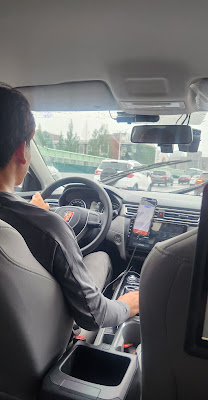
























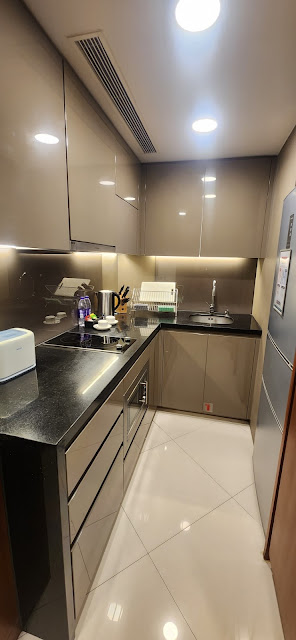














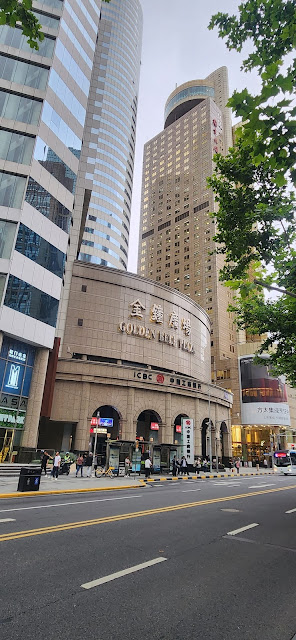



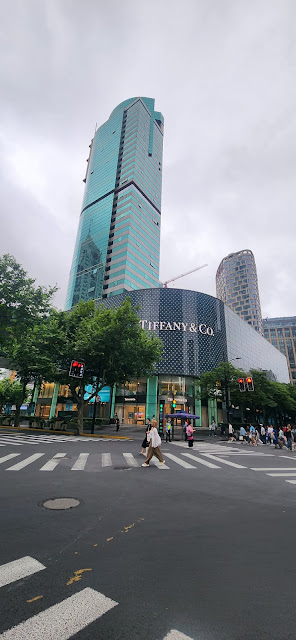


























































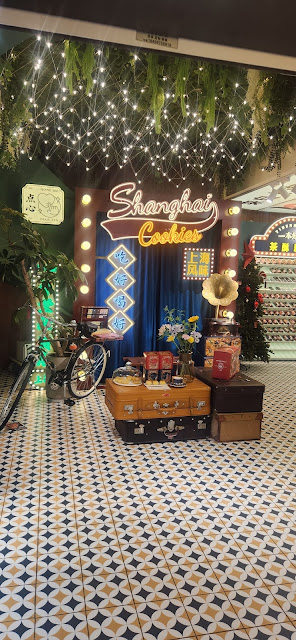








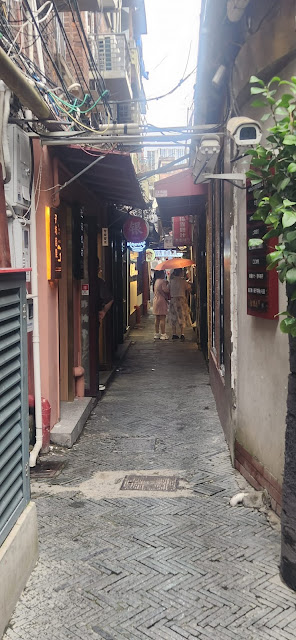























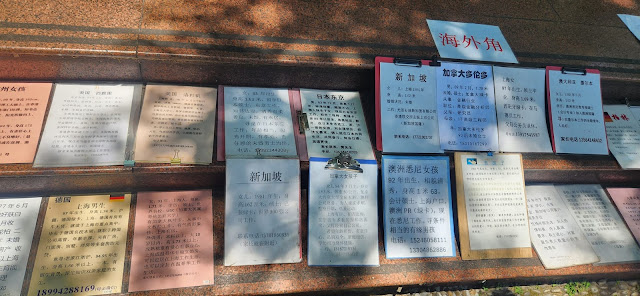


.jpg)
.jpg)

.jpg)

.jpg)
.jpg)

.jpg)

.jpg)












































































No comments:
Post a Comment